CHAPTER 2
MTS CAR TELEPHONES OF THE 1950's
THE NEXT GENERATION
By the early 1950's, Western Electric had dropped out of the mobile telephone and two way radio manufacturing business, but the gap was quickly filled by a number of manufacturers including Motorola and General Electric. Mobile telephone service in the original operator-dialed, "Manual" system would later come to be referred to as simply "MTS". At this time, channels remained in the VHF low and high band assignments. There were no UHF Bell mobile telephones other than some special order GE Progress Line units in the late 1950's for use in urban "subscribed out" offices.
Mobile telephone channels, at least in urban areas, were already fully loaded by the end of the 1950's. Waiting lists for a mobile number grew in length, and subscribers often resorted to registering a mobile in another state just to get a number, using that number to place calls as a "roamer" in an area which had no new numbers available. Statistics show that the Bell System companies had literally thousands of people on waiting lists to become customers, and had resorted to a somewhat "elitist" system of assigning new numbers, giving priority to doctors, hospitals, emergency crews and so forth. Even so, I have to comment that "thousands" of potential customers does not mean that the American population as a whole was desperate for a mobile telephone or even saw the need for one. The Bell System and the FCC were not "feverishly" working on a cellular mass-market system as assorted recently written web pages and revisionist college texts would like to portray the situation.
Although Western Electric no longer supplied the radio equipment, they continued to supply control heads and decoder-selectors with appropriate cabling to the Bell operating companies. The telephone companies would order the equipment through Western Electric, which would supply the equipment accompanied by Western Electric accessory sets. Equipment seems to have also been ordered directly from GE or Motorola, supplied as a "KS-" numbered item rather than a Western Electric branded item, with the control heads and accessories still being purchased from Western Electric.
THE WESTERN ELECTRIC TYPE 47 CONTROL HEADS
A new design control head was introduced in the early 1950's, called the type 47, which was made at least through the model 47E series (1961). The main difference between suffixes seems to have been the type of handset. While all 47's used the new "G" style telephone handset, the earliest models have a heavier, bakelite version of that handset. The 47E has a built-in "transducer ringer", to be explained later, and a lighter weight plastic handset. The 47 series control head had such improvements as a key lock (standard) to prevent unauthorized use, and a smaller size with more flexible mounting arrangements than the type 41A. However, the type 47 does not have either a bell or a terminal strip included inside, and therefore it was necessary to include a separate bell box with terminal strips, the Type VJB-1 bell and terminal strip housing. Both the types 47 and 41 required external "outrigger" boxes to add multiple channel selectors. The Type 47A used the bell inside the VJB-1 bell and terminal box as shown below. The 47E uses an earphone-style crystal transducer protruding through a hole instead of the bell in the bell in the separate box, and was intended mainly for use with either the the late 1950's Scantlin solid state selector unit or the internally mounted VS-1 selector in the GE Progress Line mobile telephones. See Scantlin information, shown separately.
Trivia: The Type 47 key switches are individually keyed. Technicians had a master key, to eliminate having to ask the customer for his key.
The head below is a 47E series head from San Francisco. It was probably used with a transistor-power supply GE Progress Line radio package, because of the "12 V. negative" warning right on the ID tag. There are colored lamps hiding under the paper tag; one for "ON" and the other for "CALL," which lit when a call was received. The writing above the dot on the right is the mobile's number, and below the dot, "San Fran," the city of registry. Since it is a 47E series, it probably dates from 1960-63.
Note that other than the style of control head and more modern radio packages, these MTS installations were essentially the same as the original 1946 versions. The Type 106A selector remained an external accessory item for Motorola radio installations, but the radio packages themselves were now one-piece Motorola or GE equipment such as shown below.
CLICK HERE TO SEE A PHOTO OF A TYPE 47 HEAD IN USE IN 1960
Shown below is a Type 47 in use in 1957 on a New York City street. The radio package in the trunk appears to be a GE Pre-Progress VHF high band mobile. Note the hokey tail lights added by the owner to the poor car. The 47 series control head seems to have been intended to be mounted on the steel dashboard of cars at the time, a rather silly location for such reasons as few owners wanted a large hole there when the phone was removed, and most of the time the sun would bake the control head to such an extent that the handset was too hot to be touched!
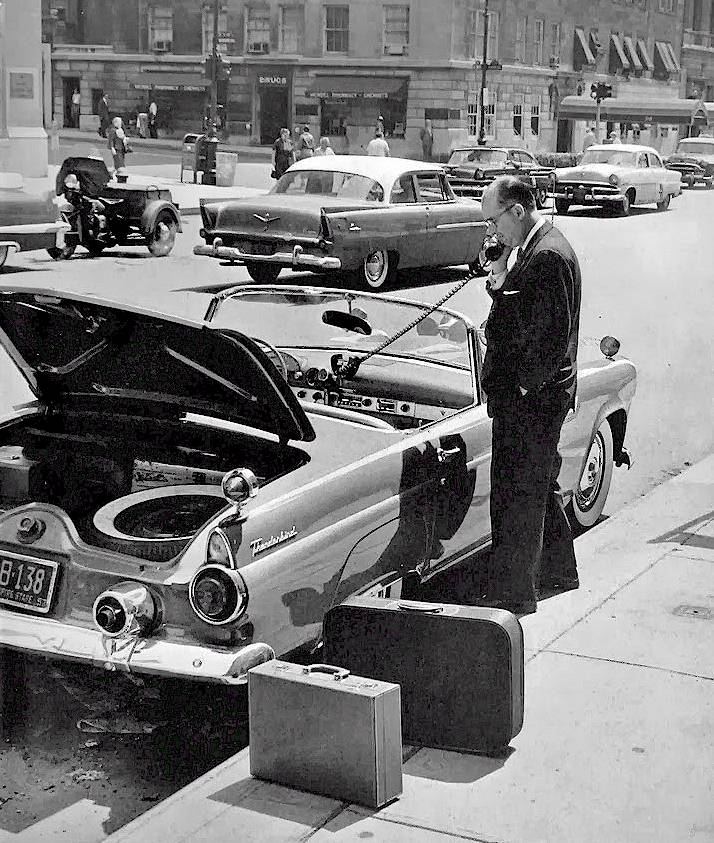
Richard Diamond, Private Eye. Note
the VJB-1 terminal and be,, box on the hump behind the control head.
Telephone company employee in Wisconsin circa 1956, vehicle has both low band "Z" channel and high band "Urban" phones installed:
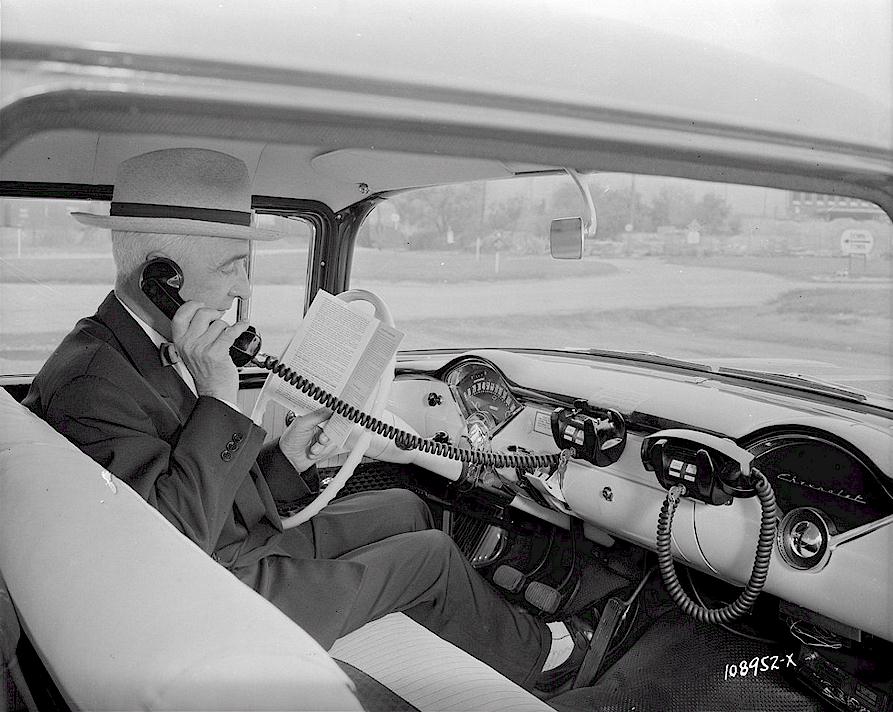
The photo below shows the VJB-1 Junction (terminal and bell) box. There is a small bell inside, and this box was usually mounted in the front kick panel area or under the dash, where the bell could be heard.
Throughout the early 1950's, a typical MTS installation would consist of a nearly generic Motorola Deluxe, Research Line (later "Twin-V") or GE "Progress Line" two way radio with a Western Electric 41A or 47A series control head. The Motorola equipment always used the Western Electric 102A external selector, whereas the GE Progress Line equipment used its own internal selector, labeled the VS-1. Older GE equipment pre-dating the "Progress Line" also used the Western Electric external selector. Typical Motorola radio numbers were W43-1 and W41-1, the "W" standing for Western Electric contract, and the 43 referring to "Urban" while the "41" represented "Highway." Later Motorola numbers were typically W43GGV-1 and W41GGV-1. The GE post-1954 "Progress Line" equipment was numbered WA/E-33 or WA/E-13. The GE Progress equipment initially came in 17" cases to accommodate the internal selector set and a multiple channel deck. The transistorized power supply 12 volt GE "Progress Line" mobiles of the late 1950's had enough room inside to allow use of a narrower, and otherwise standard 13" case.
MOTOROLA "RESEARCH" and "TWIN-V" MODELS
IMotorola "Research" pre-1956 W41G-1 Low Band 25 Watt MTS vibrator powered mobile for use with external selector set:
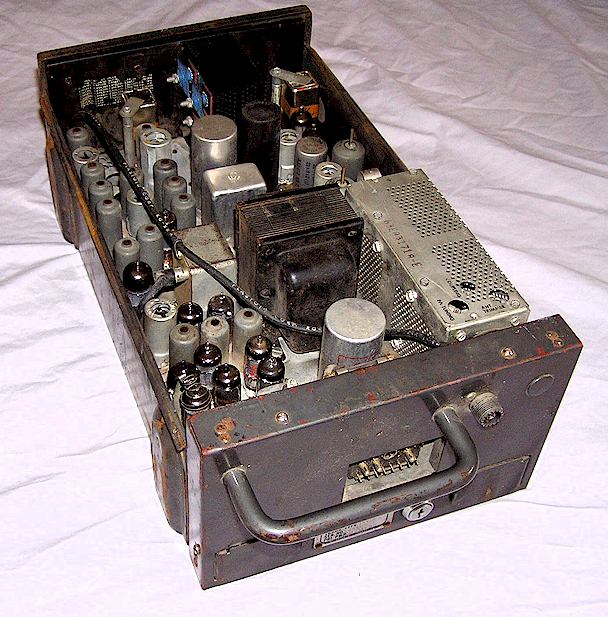
Shown below is a low band "Z" channel" Twin-V" Motorola mobile, 2 channels, with transmitter dynamotor power supply. The model number appears to be W41AAD-2. I bought this on eBay in 2012 but the seller reneged on the deal claiming "unable to ship." Note that an external Western Electric 102 selector set decoder would still be needed.
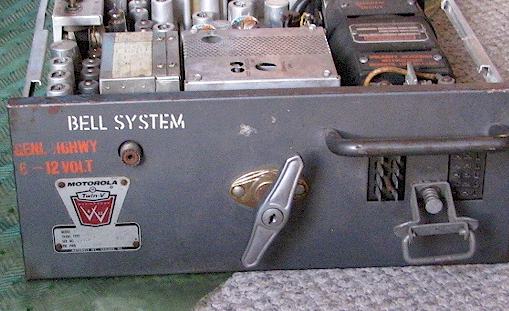
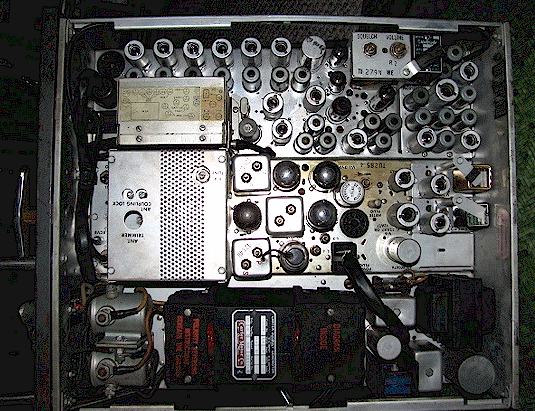
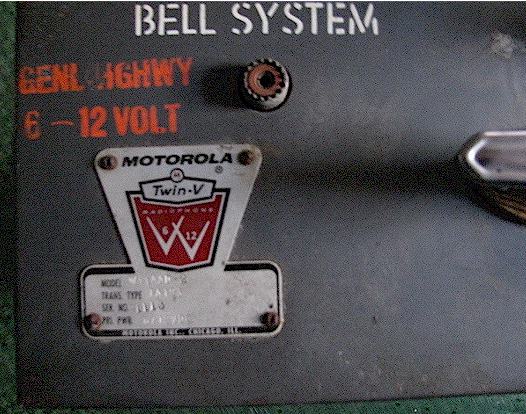
GE PROGRESS MODELS
The example below is a vibrator powered 1956 vintage high band GE Progress Line 17 inch "wide case" mobile (BA/E-33) which contains an internal selector called the . Trust me when I say this is one heavy item! This normally would have fed a Type 47A control head with VJB-1 junction box, and was capable of being wired for either 6 or 12 Volt cars. The "Bell System" stencil on the case indicates that this was company-owned lease equipment. Because of the wide case, there was room to internally mount a decider, which was GE's VS-1 panel (possibly manufactured for them by Secode) as identified in the photo below. These Progress Line models were offered in UHF as well, as in some of the larger cities, by 1956, UHF frequencies were being allocated to Bell System car telephone systems.
.
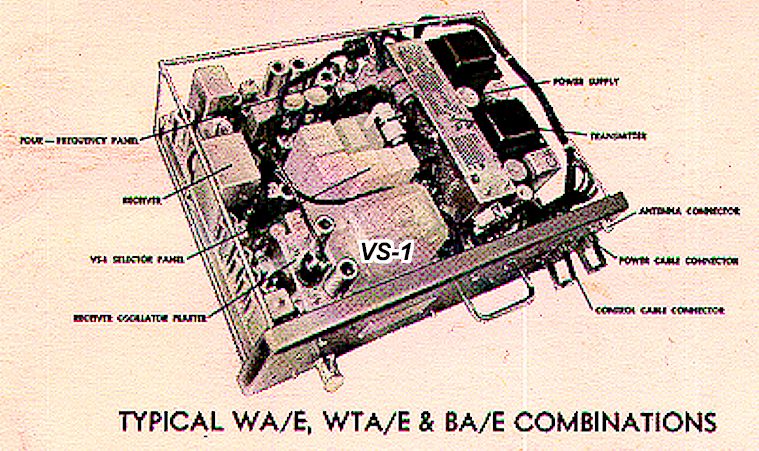
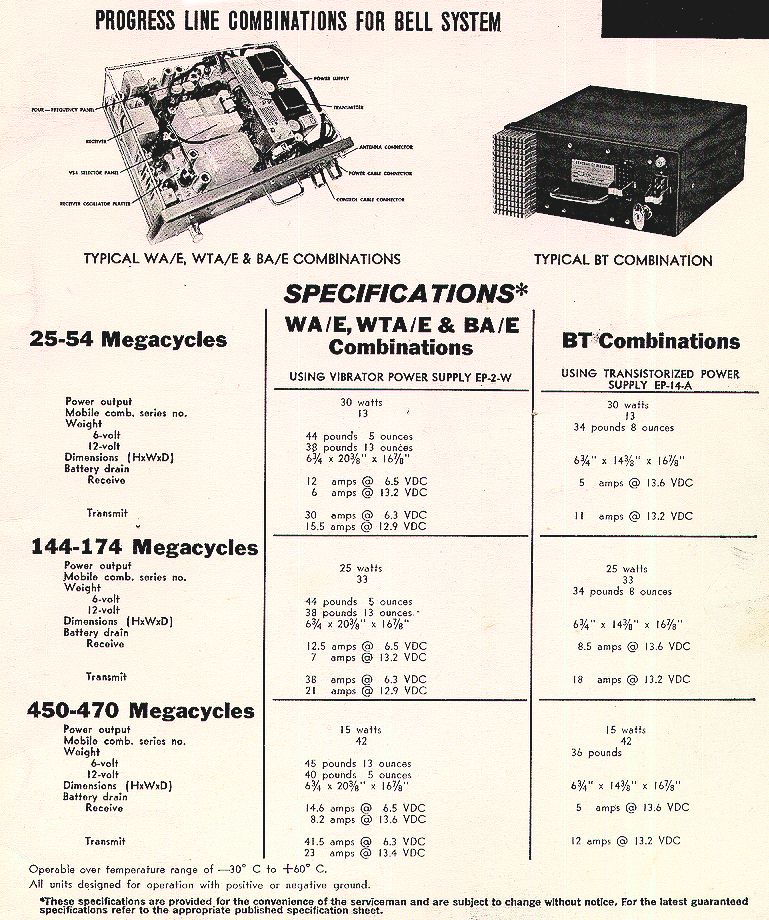
GE Progress Line MTS Head
Shown below is the MTS control head offered by GE to accompany their Progress Line combinations. This is a Secode single channel control head circa 1959 as used on a high band VHF GE transistor powered Progress Line MTS single channel telephone by a small independent telephone company in the northeastern USA. These systems were generally single channel and all were push-to-talk half-duplex systems with MTS decoders also by Secode. Used by some small Bell System affiliates and also radio common carriers and private large corporate systems. Note the color is the same frosted green as the first generation Progress radio equipment. Most of the larger Bell affiliates used the Western Electric 47 Series control heads.
Photo courtesy Dalene Dutton
CLICK HERE TO SEE EXAMPLES OF MOBILE PHONE ANTENNAS OF THE 1950's
Ver. 8/14/2024 ęGeoffrey C. Fors 2005 All rights reserved